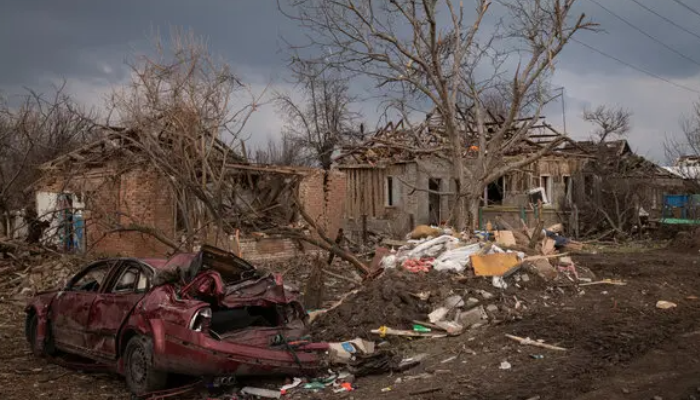
The war in Ukraine has entered its third year, with both Moscow and Kyiv continuing to clash despite efforts to reach a ceasefire. US negotiators have stepped in, holding talks with Russian officials on March 24, 2025, to push forward a proposed partial ceasefire agreement. However, disagreements over the scope of the ceasefire remain a significant hurdle.
Challenges in Ceasefire Agreement and Key Issues
Although both parties agreed to a limited 30-day ceasefire in principle, fighting has not stopped. On March 24, 2025, Russian missile strikes in the Ukrainian city of Sumy resulted in 88 casualties, including children, highlighting the ongoing violence. Ukrainian President Volodymyr Zelenskyy has called for an end to these attacks, stating, “Every day of this war brings more losses, pain, and destruction.”
The main point of contention is what areas should be off-limits for strikes. The US has proposed that the ceasefire cover both “energy and infrastructure” in Ukraine, but Russia insists that it should only apply to energy infrastructure. Zelenskyy has also sought protection for critical infrastructure like railways and ports.
US Involvement in Ukrainian Energy Assets and Nuclear Power Plant
During the talks, US President Donald Trump suggested that US companies should manage the Zaporizhzhia nuclear power plant in southern Ukraine, Europe’s largest nuclear facility, currently under Russian control. However, President Zelenskyy has strongly opposed the idea of US firms owning Ukrainian energy assets, stating that Ukraine should maintain control over its own resources.
Diplomatic Negotiations and the Road to Ceasefire
US officials are working to finalize the details of a ceasefire, including measures to secure a separate ceasefire in the Black Sea region. Steve Witkoff, the US Special Envoy, expressed confidence that a permanent ceasefire could be achieved soon, noting significant progress. However, Zelenskyy expressed frustration that Russia’s attacks continue despite the proposed ceasefire.
Territorial Disputes and the Role of Referendums
A key issue in the negotiations is the control of regions like Donetsk, Kherson, Luhansk, and Zaporizhzhia, which Russia claims as part of its territory after disputed referendums. The West and Ukraine have labeled these referendums as illegal, while Russia asserts that the majority of people in these regions desire to remain under Russian control.
Looking Forward: Will a Ceasefire Be Reached?
As the talks continue, hopes remain high for a breakthrough that will bring an end to the bloodshed. US and Ukrainian representatives are expected to meet again soon to discuss the ceasefire in greater detail, although a timeline for a final agreement remains uncertain.
